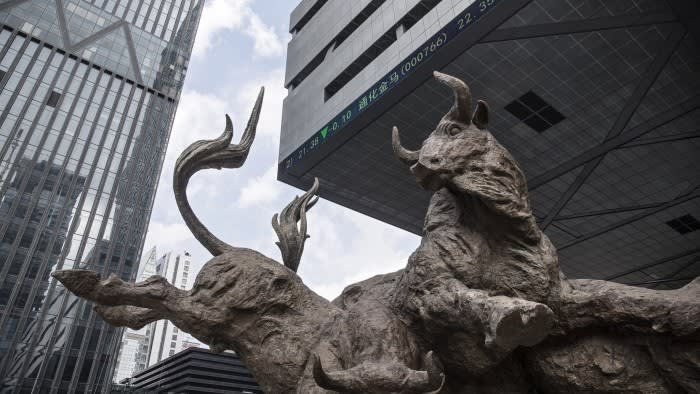Unlock the Editor’s Digest for free
Roula Khalaf, Editor of the FT, selects her favourite stories in this weekly newsletter.
Share buybacks on mainland China’s biggest exchanges have soared to a record high this year as Beijing pushes for companies to return cash to shareholders as part of its efforts to revive a flagging stock market.
There have been Rmb235bn ($33bn) in buybacks across mainland-listed shares so far in 2024, more than double last year’s total and far surpassing the previous record of Rmb133bn in 2022, according to Chinese financial data provider Wind.
The rush of share repurchases comes as China’s government unleashes the biggest round of economic stimulus since the Covid-19 pandemic.
The benchmark CSI 300 index has risen more than 20 per cent over the past month amid Beijing’s bid to breathe new life into its equity market after years of dismal performance.
Kinger Lau, China equity strategist at Goldman Sachs, argued that buybacks made “economic sense” for companies with cash to spare given how far Chinese share prices had fallen. He added that such a move could also bolster the government’s coffers when it held big stakes in companies.
The surge in buybacks began even before the Chinese authorities announced Rmb300bn in central bank loans to fund share repurchases last week.
More than 20 Chinese companies, including state oil group Sinopec, have announced share buyback plans exceeding Rmb10bn since the announcement of the central bank scheme on Friday, according to a Financial Times calculation based on exchange filings.
Jason Bedford, a China banking analyst formerly at UBS and asset manager Bridgewater, said Beijing was seeking an equity rally by encouraging buybacks.
“Clearly, the government has been pushing this throughout the year,” he said.

Kin Chan, chief investment officer at Argyle Street Management in Hong Kong, said that China was following “a Japanese approach, which is telling companies to do share buybacks”.
“As a stock market player, this is wonderful, but does this solve the economic problem? I have no idea,” he said.
In a sign of China’s faltering growth, GDP rose 4.6 per cent year on year in the third quarter, official data showed on Friday. The official target is 5 per cent.
A rise in buybacks, which boost stock prices by reducing the supply of shares, has been accompanied by a slump in new equity issuance.
As of mid-September, the amount raised by initial public offerings in mainland China was down 86 per cent year on year, according to Dealogic data. The $5.5bn total was the lowest of any comparable period on record excluding 2013, when regulators overhauled rules and prevented new listings.
Companies have also handed more money to shareholders by increasing dividend payments.
Goldman Sachs estimates that listed Chinese companies, including those offshore, have returned more than Rmb2tn to shareholders through buybacks and dividends in each of the past three years.
The bank forecasts that the total this year will reach Rmb3tn, with Hong Kong-listed companies such as Tencent and JD.com among the drivers of higher payouts.
China’s securities regulator announced in April once-in-a-decade policy “opinions”, also known as the “nine measures”, which pushed for better governance and supervision of markets. Analysts said the move would encourage higher returns for shareholders.
Additional reporting by Cheng Leng in Hong Kong
https://www.ft.com/content/a7ea387b-05f0-4fb8-95cf-bc6722bb7fda


